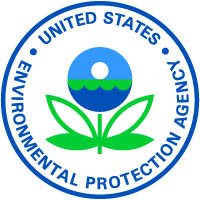17
Jul
Petition Filed to Compel EPA to Review All Pesticide Product Ingredients
(Beyond Pesticides, July 17, 2017) Last week, Center for Food Safety (CFS) filed a legal petition demanding major updates and improvements to the U.S. Environmental Protection Agency’s current review of pesticides. The petition specifically seeks to compel EPA to require that pesticide companies provide safety data on all ingredients of a pesticide products, or formulations, both active and inert. The agency generally only requires data on a pesticide product’s active ingredient, despite evidence of potential hazards associated with synergism between ingredients, including inert (undisclosed) ingredients, and other pesticides applied in combination.

According to Amy van Saun, attorney with CFS, “EPA’s job is to ensure pesticides are safe for children, families, and the environment, but numerous pesticides have other ingredients or combined effects that are causing significant risks and harm. EPA’s outdated and insufficient safety assessment endangers the public welfare and must be brought into the 21st century.”
The CFS petition requests the following actions from EPA:
- Revise pesticide registration regulations to take into account all pesticide ingredients (active, inert and adjuvant) and their effects on the environment.
- Revise pesticide registration regulations to require whole pesticide formulation and tank mixture testing to take into account synergistic effects.
- Revise pesticide registration regulations to require inert ingredients and whole pesticide formulations testing for chronic toxicological effects and degradation.
- Revise pesticide registration regulations to require Endangered Species Act (ESA) consultation on the effects of whole pesticide formulations and tank mixtures on threatened and endangered species.
- Comply with the above requirements in conducting statutorily mandated registration reviews of pesticides.
An inert ingredient is defined as any ingredient that is “not active,” or specifically targeted to kill a pest. According to a 2000 report produced by the New York State Attorney General, The Secret Ingredients in Pesticides: Reducing the Risk, 72 percent of pesticide products available to consumers contain over 95 percent inert ingredients and fewer than 10 percent of pesticide products list any inert ingredients on their labels. The report also found that more than 200 chemicals used as inert ingredients are hazardous pollutants in federal environmental statutes governing air and water quality, and, from a 1995 list of inert ingredients, 394 chemicals were listed as active ingredients in other pesticide products. For example, naphthalene is an inert ingredient in some products and listed as an active ingredient in others.
Despite these uncertainties and potential hazards, pesticide manufacturers are only required by EPA to list the active ingredients in a pesticide, based on the agency’s interpretation of the Federal Insecticide, Fungicide and Rodenticide Act (FIFRA). This leaves consumers and applicators unaware of the possible toxicity present in a vast majority of the pesticide formulations they are using unless the EPA Administrator determines that the chemical poses a public health threat.
The failure of EPA to require the disclosure of inert ingredients poses many problems for those trying to protect human health. Failure to disclose the ingredients prevents consumers and decision makers from making informed decisions and comparing hazards. Local and state governments also run into roadblocks in their efforts to protect citizens, as they cannot readily evaluate what is in the pesticides products (formulations) that they are spraying in their communities and make independent safety judgments, putting their residents at risk. Under the law, it is EPA’s duty to assess the harm of pesticide product ingredients and disclose this information on product labels.
Environmental groups, including Beyond Pesticides, have consistently urged EPA to follow in the steps of countries like Canada and the European Union by following the precautionary principle, which generally approves products after they have been assessed for harm, not before. Given the lack of complete information and uncertainties, Beyond Pesticides advocates that communities and individuals reject legally allowed uses and exposures deemed acceptable under EPA risk assessment calculations. Instead, the organization asked that decision makers focus on safer alternative practices and product that are proven effective, such as organic agriculture, which prohibits the use of toxic chemicals.
Sources: Center for Food Safety
All unattributed positions and opinions in this piece are those of Beyond Pesticides.










